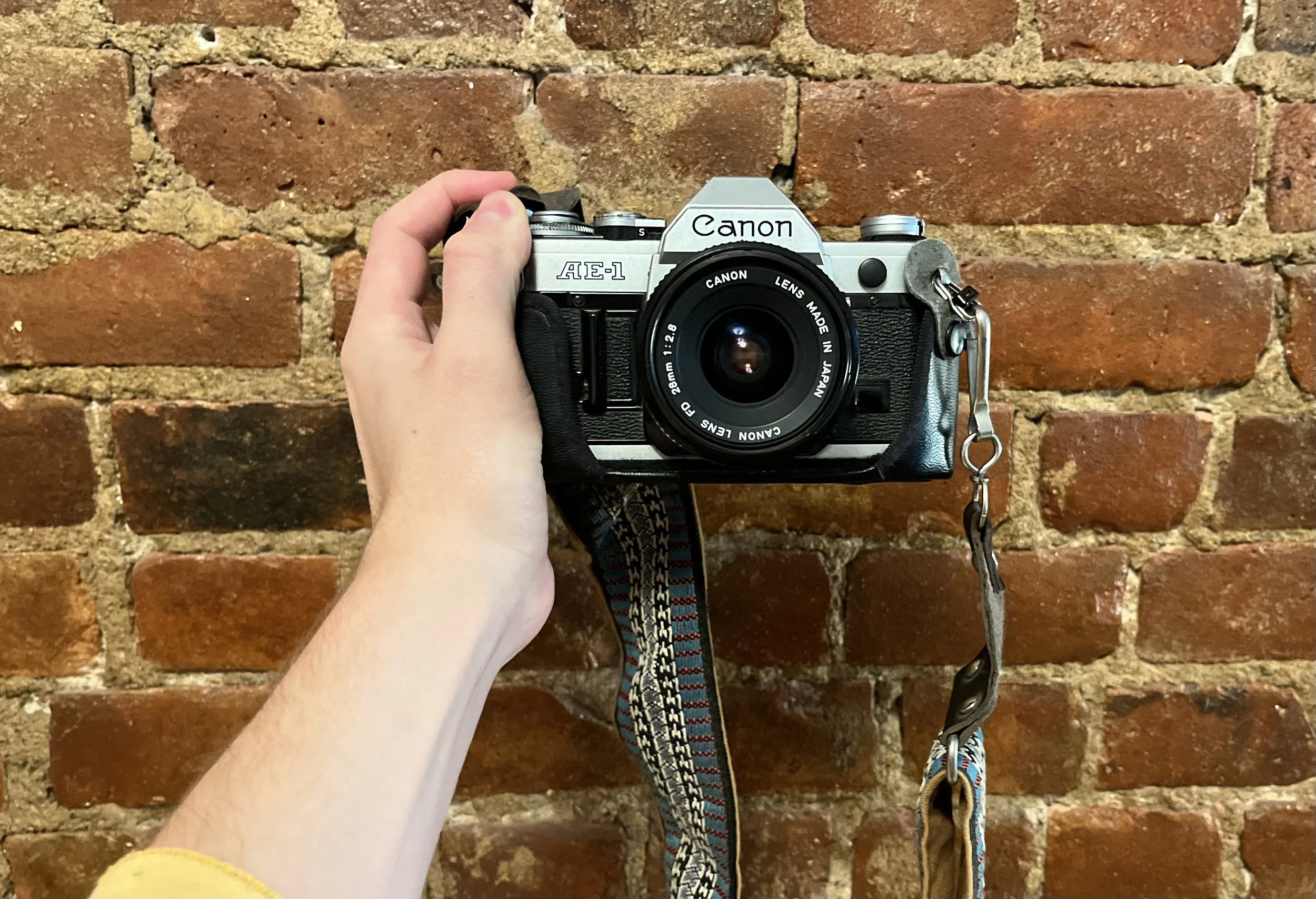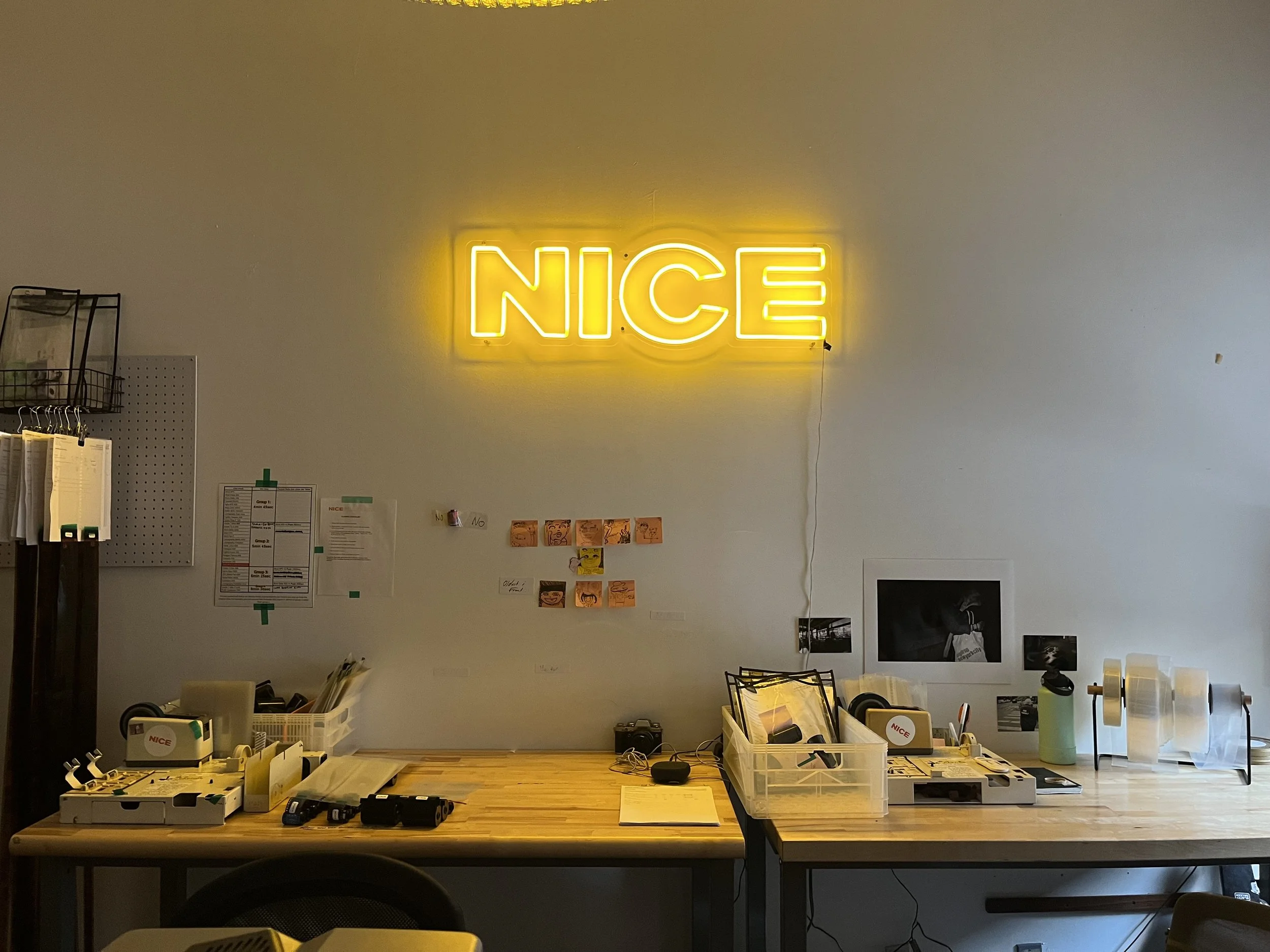Just Started Shooting Film?: What I Wish I’d Known.
I started shooting film 6 years ago on a whim when a friend showed me the new Canon AE-1 he had bought. “Back then” the prices were a little less gouged and without the presence of large social apps like TikTok, it felt like something not a lot of people were doing. I was wrong of course, tons of people were shooting and had been for years but I was able to gain practice and style in a bit of isolation. I’ve learned so much since then and there are so many things I wish I had known when starting 35mm film photography.
Buy a Cheap 35mm Camera
Film photography is a swimming pool that you’ll never hit the bottom of. The sooner you accept that the easier is to resist the impulse to throw money at it. This is one of the hardest urges to overcome when you are first introduced to the medium. You start absorbing new and engaging work by new and engaging people made with aesthetically pleasing and expensive film cameras. Good gear does not make good photos and if you jump off the edge too quickly you’ll end up frustrated wondering why you can’t replicate the look of your counterparts even with the same 35mm film camera strapped around your neck. Buy a cheap 35mm film camera and get the basics down before anything else. Enjoy the simplicity and ease of the experience, there is always time to upgrade. Check out our list of 10 35mm cameras for beginners to get started.
Learn How to Use Your 35mm Camera
Learning how to use the film camera you have is a no-brainer right? What I mean is learn everything about your camera. I know deep diving into a bunch of photo jargon and mathematical relationships is only a select few’s idea of a good time but it’ll pay dividends in the long run. For a long time I was the person who shrugged off the shutter speed and aperture relationship in favor of a much better method: turning all the dials back and forth until my exposure needle hit the center of my camera. Believe me, I understand the appeal but in doing this you’re left with a lot of questions: Why are some of my shots so dark and others just fine? Why did I not get all 36 frames on this roll? Why do some of these colors look dark and grey while others are vibrant and lifelike? The key to being a good photographer is consistency, having confidence that your shots will look the same because you are controlling the camera. Take a day, find an online manual for your camera, watch YouTube videos, and set yourself up for a lifetime.
Keep Your Film Negatives
Working at lab I’ve noticed a couple of trends with negatives. A lot of times, first time 35mm shooters could care less about their film negatives. They get 35mm photos as digitals, while negatives seemingly have no practical use. They cost extra to sleeve and they can build up and occupy space. 35mm film shooters a couple of years into their practice are usually fastidious about negatives and archiving. As time goes on you start to appreciate your film photos in physical form and want to build out an archive that highlights the beginning of your film journey all the way until now. A lot of 35mm film shooters wish they had saved their film negatives from when they first started to be able to see how much progress they’ve made. Film negatives tell you so much about your patterns of shooting and how you can improve as well as allow for things like rescanning at a later time. Read our list of why to keep your film negatives for all the reasons to start storing your photos with care.
Where to Get Film Developed
When I first started I would get film scans back with tons of dust, strange color casts, scan lines, and pictures with two frames combined into one. When you first start shooting 35mm film you are often at the mercy of the film lab you choose. You don’t have the vocabulary or knowledge to know what’s a film camera/film issue and what’s an issue caused by the film lab. A lot of times I felt forced to accept scans that I didn't feel were an accurate interpretation of my film negatives but I had no idea what to ask to change or what the problems were. I would spend hours trying to troubleshoot my camera and my shooting practices to no avail. What I didn’t know was that there were no problems I could fix. Where to get film developed is a big question, and whether you choose an NYC film lab or any lab film lab near you, a very conscious choice is warranted. Obviously, I recommend Nice Film Club. Not only is the dev/scan quality better than any lab I’ve encountered but the line of communication is always open. The NFC team always provides thorough and well-researched responses to questions regarding your film or why an image/film roll looks a certain way. Read our comprehensive guide to the Nice process and get started here.
Don’t Look to Instagram!
The conversation around Instagram and Photography is loaded. Everyone I know has a complex relationship with the app, a sharing platform built to feed an algorithm yet one of the only places where photos can gain reach outside your immediate circle. When you’re first beginning photography, I recommend not finding your primary influence inside popular Instagram feeds. I believe there is an inherent purity associated with film shooting. Often times we assume a film photographer’s shots are straight from the camera to their feed because we have a preconceived notion that film should not be touched, and is never edited. A lot of the time popular Instagram photographers have extensive post-shooting work flows and editing presets to give all of their frames a cohesive look. Uniform and highly curated grids are part of what makes a successful Instagram Personally I don’t find an issue with it, and the ethical concerns are for another day, but this reality does make questions like, “What film camera was this shot on?” and “What film are you using?” less relevant. Trying to mirror yourself off a feed can be tricky, look to books, museums, paintings, and all physical manifestations of photos. This is a great way to gain inspiration and I promise will leave you with more answers than questions.
Since the 60s when Eggleston’s eye came on the scene, we’ve been re-evaluating the mundane and finding beauty in the everyday. Instagram is stocked full of film photographers shooting old cars, overgrown shrubbery, the quiet of suburbia, and anything reminiscent of days past. If this is your style, great! Nothing wrong with that. Just remember that if this is all you are seeing on Instagram you might start to believe, “this is what film photography looks like.” This is simply one style of photography that is extremely popular right now. Shoot anything that interests you whether or not it falls into this highly marketable category. Finding your own style and approach is necessary to be inspired by film in the long term.
Be Patient: Film Photography Takes Time
Film photography is an extreme test of patience. Spending time, energy, and money on shooting a 35mm film roll just to see that it was blank or the shots turned out terrible is something everyone with a 35mm camera is familiar with. When you’re first starting out, this can seem to happen over and over and over again. All you can do is be patient and keep going. This medium is not a forgiving one but that feeling of nailing a shot you were itching to see come out is irreplicable.


The first picture is one I took in 2017 when I was just finding my bearings in 35mm film photography. These are similar lighting conditions, environments, subject matter, but the two are completely different photos. In the first the subject is poorly placed and shot from an unflattering angle, the background adds nothing to make the image dynamic, in fact it distracts from the subject. The choice to shoot vertically, below the waist, stopped down (aperture), and with the film I did are all choices I would not make today.
In the second photo the subject is nicely lit, framed well, exposed properly, and the background lines and shapes add to the overall quality of the image. I don’t think anyone would assume looking at these two photos that they are the same photographer.
I firmly believe that film photography is a skill that can be taught to almost anyone, and those who excel are people who have put in the time to transition their photos from nondescript to something they can be proud of.
If you’re just starting your film photography journey hopefully this was helpful in encouraging you to progress and gave you some ideas of how to be successful in your practice. Although this is largely based on individual experience, I believe it can be applied more widely to help beginners. If this article was helpful please ask me any questions in the comments or suggest what you’d like me to write more about!



